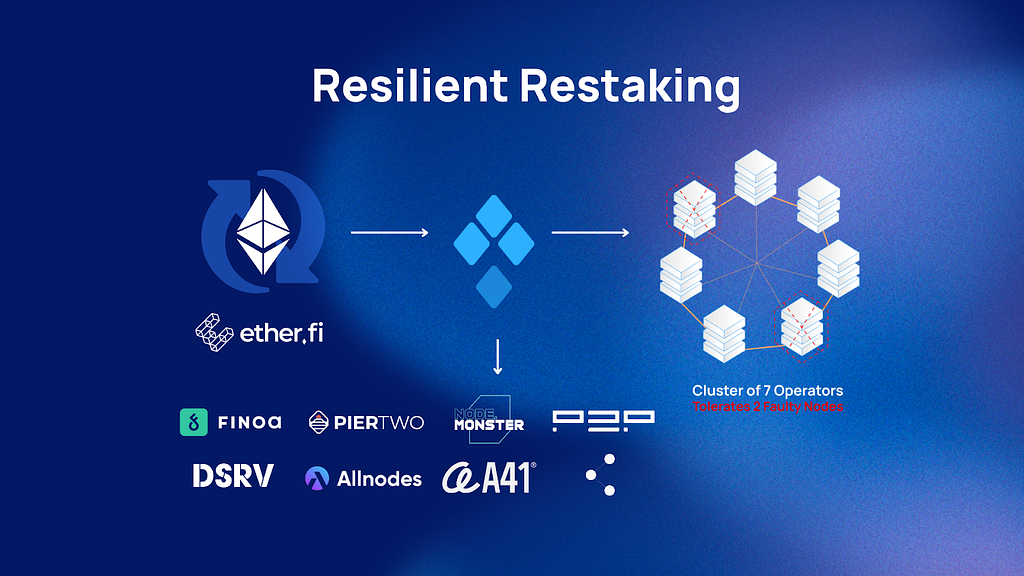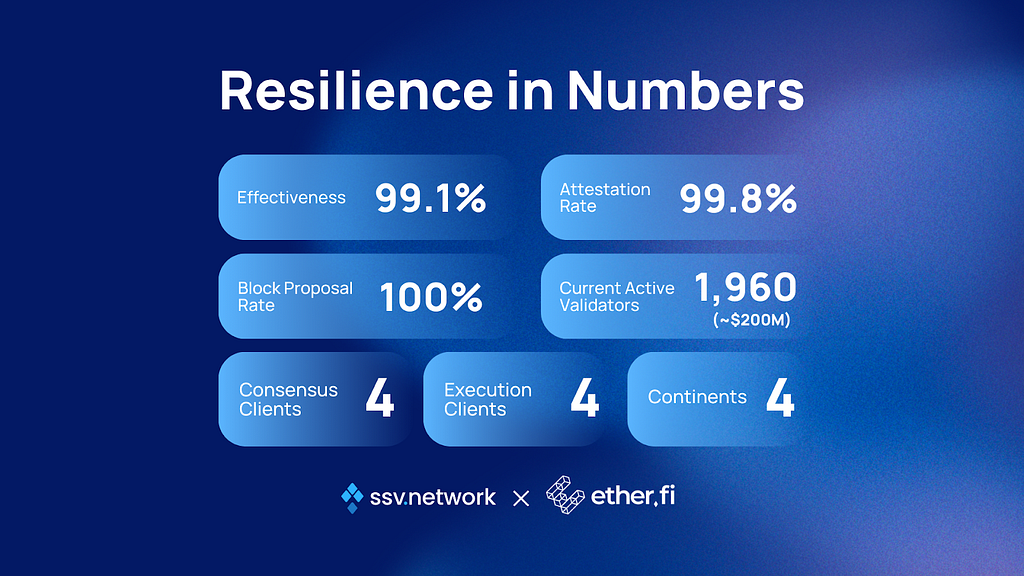Ether.fi Integrates SSV for Resilient Restaking
Unlock the future of restaking with Ether.fi's groundbreaking integration with SSV Network, enhancing security and resilience.

The ssv.network DAO is excited to announce another step into the restaking space with ether.fi’s latest Distributed Validator Technology (DVT) integration.
In the fast-paced restaking industry, ether.fi is setting the benchmark for safe and decentralized node operation. By integrating ssv.network, ether.fi is poised to spearhead a new era of resilience in distributed native restaking. Lets dive in!
Ether.fi’s decision to integrate SSV into its protocol is driven by the need for enhanced resilience and mitigation of potential risks for Ethereum’s base layer. By leveraging DVT and combining it with the expertise of top-performing node operators from around the globe; ether.fi aims to fortify its restaking operations against client bugs, geographical risks, and other faults that could disrupt validator performance.
Mike Silagadze, Ether.fi CEO: “Ether.fi has always been focused on making our operations more decentralized and resilient. Our partnership with SSV allows us to continue down that path while maximizing rewards for our users!”
The integration allows Ether.fi to tap into a network of top-performing node operators on the SSV Network that are strategically located around the globe. These node operators (NOs), including Finoa, PierTwo, Allnodes, DSRV, a41, P2Porg, NodeMonster, and Chainnodes, bring a wealth of expertise and geographic diversity to the table.
Node operator selection plays a critical role in ether.fi’s strategy for resilience. By choosing NOs based on different clients, infrastructure setup, and geographic locations, Ether.fi ensures greater alignment with the Ethereum ethos and best practices for node operation. This strategic approach enhances the protocol’s long-term viability and resilience to external pressures.

Bigger is better! One of the standout features of Ether.fi’s setup is that it uses a cluster size of seven NOs. This cluster configuration allows 2/7 NOs to go offline without affecting validator performance. This enterprise-grade configuration enhances Ether.fi’s resilience and positions it as a reliable and trustworthy player in the LRT space.
Over the past few weeks, Etherfi has onboarded 1960+ validators (~$200m TVL) to SSV Network to help secure the ETH staked on the base layer.

Ether.fi is one of the only restaking protocols that allows stakers to control their keys. By using DVT, the validator key is split into keyshares, making it more difficult for malicious actors to compromise a validator. This also allows stakers to retain custody over keys and store them safely offline.
In addition to resilience, the integration of SSV offers other benefits, such as increased relay liveness through operators with the same MEV Relay correlation. This optimization not only improves protocol efficiency but also enhances overall performance and stability.
Earlier this month, an SSV cluster used by ether.fi got an 11ETH MEV block reward. SSV Network is protocol agnostic and allows integrated applications to use a wide variety of MEV relays.
Ether.Fi’s integration with the SSV network marks a significant milestone in the advancement of restaking and secure node operation. By prioritizing resilience and reliability in restaking operations, Ether.Fi sets a new standard for security and trustworthiness in the staking ecosystem. As the industry continues to evolve, initiatives like this pave the way for a more decentralized, resilient, and trustworthy Ethereum.
Website | Builders Hub | Network Hub | Discord | Dev Center | Documentation | GitHub